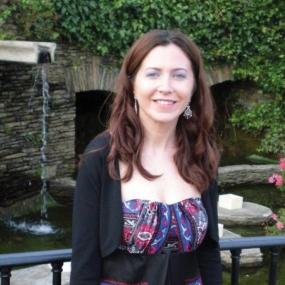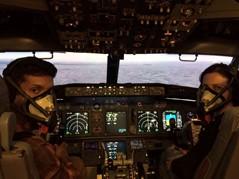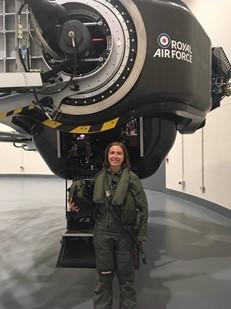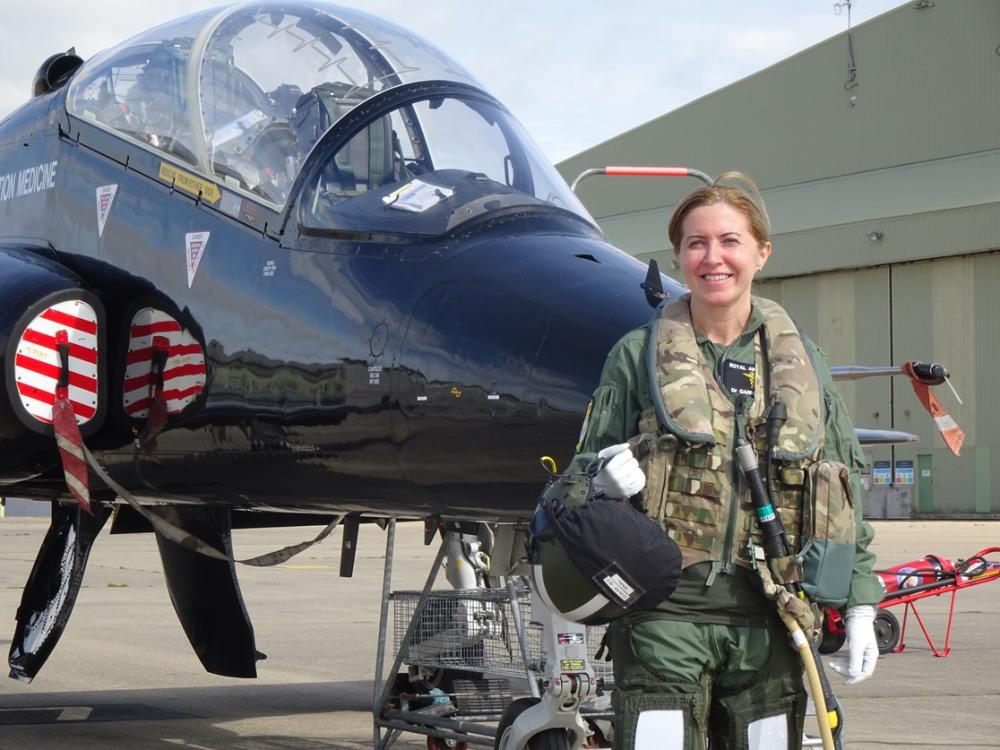From Intensive Care to Aviation Medicine

Vanesa trained and qualified in intensive care in 2007 in her native country Spain. Working there for a year as a consultant Vanesa decided to move to the UK in November 2008 for a 6 month job at UCLH and never left! Vanesa was the first ever Senior Clinical Fellow in ICM at St Mary’s hospital back in 2009 and was appointed a Locum consultant in August 2010. Vanesa’s keen interest in aviation led her to take flying lessons and she is half way through earning her private pilot licence which COVID halted for obvious reasons. Vanesa joined the RAF in March 2019 as a medical officer instructor in aviation medicine and obtained her postgraduate diploma in Aviation and Space Medicine by the FOM last March 2020. Vanesa combines both jobs that provide her with a highly rewarding experience.
My passion for aviation was born when I was little. Every August I used to watch a magnificent Harrier display in the North West Coast of Spain where I grew up. Standing next to my dad with ear defenders, I said ‘Dad, that is so cool! How do they do that’? But a TV cartoon series called ‘Once upon a time life’ captivated an entire generation of children who would later become doctors including myself.
So there I went and embarked in a lifelong relationship with a profession that could certainly be described as a roller-coaster. But how does one end up combining intensive care and aviation medicine? Neither of these specialities are taught at medical school, very little about the former and nothing about the latter.
A couple of subjects on surgical and medical emergencies in my last year as a university student opened my eyes to a fast paced world where one needs to be rather skilful with fancy gadgets but above all, know a substantial amount about how the human body works, how it breaks and how we can try to fix it.
Upon the opening of a Major Trauma Centre, military colleagues subsequently joined the cadre closely working with us in intensive care. Coming from the three branches of the Armed Forces, I was introduced to other highly appealing fields such as diving medicine, extreme and austere environment medicine and of course aviation medicine.
The road of discovery formally started in 2017 when I undertook my first official course in aviation medicine. If we think intensive care is a fast paced environment, try flying a combat manoeuvre in a high performance aircraft whilst pulling 9 times the force of gravity or landing an Airbus 320 in the Hudson river after striking a flock of birds as Captain Sully did.
I very soon realised the immense similarities between aviation and medicine both putting safety at the forefront of what we do. Pilots and aircrew rely on check lists and cross checks just like we do in clinical practice when we perform a tracheostomy or a crash intubation to name a few procedures. Both worlds strive to learn from their mistakes in a no-blame culture manner where crew resource management and human factors play a fundamental role. There is a great deal to learn from one another and I strongly believe in strengthening this bond further.
My first course opened a new world for me. I knew I was onto something exciting and challenging and I decided to pursue it further alongside my critical care career. It is greatly rewarding to see all those hours sitting in front of a book studying physiology and all these years on the front-line paying off. A fundamental pillar of aviation medicine is physiology, of which hypoxia is a very relevant feature. We all know how often we deal with hypoxia in intensive care, but what’s hypoxia got to do with aviation? Short answer, a great deal. As a taster, many COPD patients struggle in commercial flights because the cabin is pressurised at 8000 feet and as barometric pressure drops so does the partial pressure of oxygen. Bottom line is that we all slightly desaturate to our low nineties when we fly! Yes, that oxygen dissociation curve really matters.

More courses and an ever growing keen interest led me to meet absolute legends in aviation and space medicine such as UK astronaut Tim Peake and NASA flight surgeon Mike Barratt who basically blew everybody’s mind explaining how to perform CPR in the International Space Station given the difficulty in a microgravity environment using your own feet as a piston to deliver chest compressions. Simply amazing. My luck blossomed when I met some of my current colleagues in the RAF at a Grand Round at the Royal Aeronautical Society in December 2018 which eventually led me to my current role as a medical officer instructor at the Centre of Aviation Medicine (RAF CAM).
The most exciting and enriching part is the stark contrast between looking after the sickest patients and some of the fittest population you will ever encounter. This requires an absolute mind frame switch-over. My role involves delivering training that ultimately reduces risk to life by combining theoretical and practical aspects of aviation medicine. I am a visual and practical learner therefore I have experienced the vast majority of the training I deliver including being made hypoxic down to 65% sats! It is strikingly surprising how well healthy individuals cope with hypoxia but I guess the current pandemic has also redefined what hypoxia is for all of us.
I hold no doubt we have all at least once got on a flight with a cold. Surely your Eustachian tubes weren’t very happy about it particularly on descent to land. Struggling to clear your ears and an unpleasant earache can clearly distract you. Can you imagine a pilot trying to deal with that whilst on approach to the runway? A cold or a sinusitis are often minor ailments and rarely put you in intensive care but aviation medicine is about distraction and risk of incapacitation therefore fitness to fly is another key element. Believe me, you don’t want air in your teeth either! Hint, look up Boyle’s law .
Now imagine weighing 9 times your normal weight and having to fly a high performance aircraft. It is indescribable until you physically experience it for yourself. Nothing can be more physiologically challenging for the human body than the force of gravity pushing your blood to your feet rather than to your brain where we clearly need it. This is just some of the cardiovascular effects, don’t get me started with ventilation/perfusion mismatch and how utterly useless a pulse oxymeter in these circumstances is. And unless you stop the blood from going the wrong way, the world turns black way too quickly!


If I haven’t piqued your interest yet, try this next time you get on a flight. Choose an aisle seat at the rear of the aircraft and look at the front of the cabin as the pilot accelerates to take off. Your otoliths in your inner ear (yes, remember the vestibular system from medical school!) will be deflected backwards due to linear acceleration giving you an intense pitch-up sensation before the aircraft even got off the ground. Posh name is somatogravic illusion. Disorientation training is another key element of this fascinating aviation medicine world.
Aviation and Medicine are a happy marriage. Long may it last!
